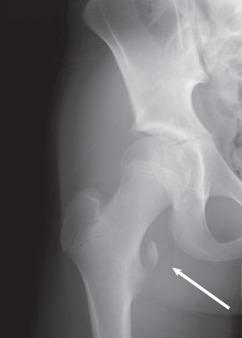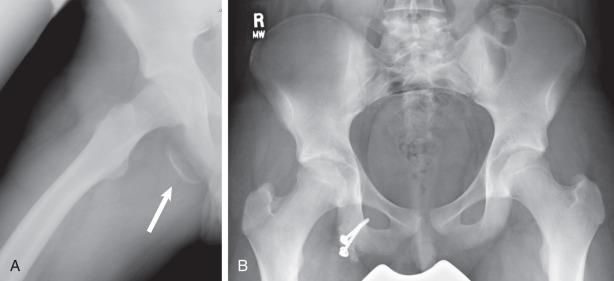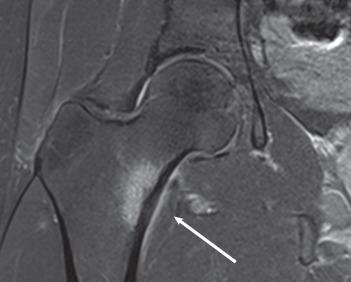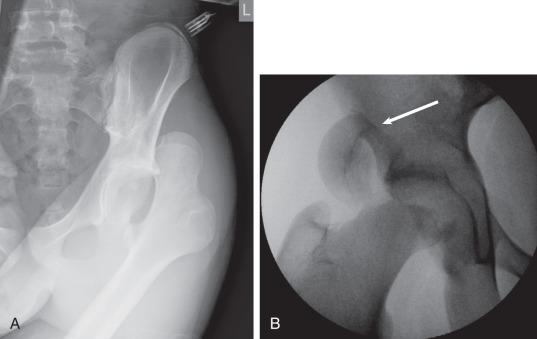Physical Address
304 North Cardinal St.
Dorchester Center, MA 02124
Almost a decade ago it was estimated that over 30 million children participated in organized sports programs, with a third of them suffering an injury yearly that required evaluation by a nurse or physician. There are physical and physiologic differences between the adolescent and adult athlete that may cause the younger athlete to be more vulnerable to injury. Children may not have as much coordination and musculoskeletal balance, as limb mass increases faster than limb length. Muscle tendon growth lags behind bone growth and growing cartilage is more susceptible to stress and injury. These sports injuries are partly due to children's increased participation in sports and the propensity for children to focus on a single sport, leading to an increased risk of overuse injuries. More recently it has been reported that up to 2.6 million young athletes each year have injuries that warrant a visit to the emergency room, costing almost $2 billion yearly.
Injuries to the hip and pelvis in pediatric and adolescent patients have been reported in the past several decades, but are now receiving increasing interest because of advances in arthroscopic treatment and magnetic resonance imaging (MRI). Injuries around the hip can be caused by a single traumatic event or repetitive microtrauma. The majority of injuries around the hip in children are soft tissue, apophyseal, or bony injuries that require supportive management, with the minority of injuries requiring surgical intervention. There is likely an effect of sex and age on hip injuries due to sports, with females sustaining more chronic overuse and soft tissue injuries compared with males. This chapter offers an overview of common injuries around the hip in the pediatric and adolescent athlete.
Apophyseal avulsion fractures of the pelvis are injuries that occur almost exclusively in adolescence. For example, a sudden, violent, unbalanced muscle contraction is applied through the musculotendinous units during sporting activities. The cartilaginous growth plate at the apophysis fails, resulting in an avulsion fracture of the pelvis. Once the injury has occurred, the bony displacement is limited by the periosteum and the surrounding muscle fascia. Sports such as soccer, rugby, ice hockey, gymnastics, and sprinting that involve kicking, rapid acceleration and deceleration, and jumping are commonly associated with avulsion fractures. Intensive training exposes the epiphyseal plate to repeated tensile stress while overstrengthening the muscles around the joint. The inherent weakness of the epiphyseal plate combined with the increased demand on the musculature predispose the adolescent athlete to avulsion injury.
The sites for apophyseal injury around the hip include the ischium (hamstring attachment), anteroinferior iliac spine (AIIS; rectus femoris), anterosuperior iliac spine (ASIS; sartorius), iliac crest (abdominal musculature), lesser trochanter (iliopsoas) ( Fig. 136.1 ), and greater trochanter (abductors). In the two largest studies of avulsion fractures, the most common location of such fractures were the AIIS in 33%, ASIS in 28%, and the ischial tuberosity (IT) in 30%, affecting males predominantly (75%). The clinical presentation typically follows a traumatic incident with an acute onset of localized pain and the description of a “pop.” Palpation and passive stretching of the muscle is typically quite painful, and patients will assume a position that places the least tension on the involved muscle. Although clinical presentation is often diagnostic, radiographic imaging is useful to determine the location, size, and degree of bony displacement.

Initial management of the majority of avulsion fractures is usually conservative, including rest and ice, followed by protected weight bearing with crutches until symptoms resolve. Light isometric stretching, full weight bearing, and strengthening exercises are started when the patient is free of pain. Return to sports occurs after full pain-free range of motion (ROM) and full strength are achieved, which can take anywhere from 8 weeks to 6 months. A recent meta-analysis found that patients undergoing surgery had a higher overall success rate and return to sports compared with those treated conservatively. However, there is usually a need for surgical intervention in avulsion fractures where the fragment has displaced more than 1.5 cm and there is loss of function or painful nonunion. In the case of the IT avulsion fracture, several reports have advocated repair if the bony fragment is greater than 2 cm; otherwise the fibrous nonunion can lead to chronic buttock pain, decreased hamstring strength, or potentially symptoms affecting the sciatic nerve. Although it is generally agreed that large displaced fragments (>2 cm) may require surgical fixation, the optimal timing of surgery still remains unclear ( Fig. 136.2 ).

Stress fractures of the femoral neck are most commonly seen in distance runners and young people enlisted in the military; the incidence is as high as 21% to 31% among these groups. Similarly, the incidence of stress fractures of the femoral neck in young female athletes has been reported to be up to 20%. Such fractures can also occur in children younger than 10 years of age. Stress fractures originate from either abnormal forces on normal bone (fatigue fractures) or normal forces on abnormal bone (insufficiency fractures). These overuse injuries result from repetitive microtrauma on the bone and occur when the extent of damage exceeds the remodeling process. The most common sites of stress fractures in the hip area are in the femur, pubic rami, iliac crest, and sacroiliac joints. Stress fractures of the femoral neck are particularly important because they often go untreated or unrecognized and can lead to the potentially devastating consequence of an acute femoral neck fracture. Female athletes are more likely to develop stress fractures because of the classic female athlete triad: amenorrhea, eating disorders, and low bone density. Additional risk factors include chronic glucocorticord use, smoking, hyperparathyroidism, hyperthyroidism, malabsorption syndromes, and calcium deficiencies.
Stress fractures of the hip often present with only subtle clinical symptoms, making the diagnosis difficult. Hip pain associated with these stress fractures presents with an insidious onset of vague groin discomfort that is worse with activity and alleviated by rest. Patients often provide a history of a recent increase in their running or activity. As the fracture worsens, pain may occur earlier or even at rest. On physical examination, pain may be reproduced at the extremes of ROM, particularly with internal rotation. A positive Trendelenburg test, inability to do a straight leg raise against resistance, and inability to hop on the affected side should raise suspicion of a stress fracture. Plain radiographs are often negative in the acute setting; therefore advanced imaging may be required. Bone scan or MRI can be more helpful for diagnosing a stress fracture and should be considered if plain films are not diagnostic ( Fig. 136.3 ).

The management of hip stress fractures is based on location, chronicity, and causative factors. Femoral neck fractures occur in two different patterns, tension versus compression. Tension-sided stress fractures are located on the superolateral femoral neck, more commonly in adults, and they may become displaced. Management of these types of fractures should be with percutaneous cannulated screws placed up the femoral neck. Tension-sided compression fractures are at higher risk for nonunion, deformity, and avascular necrosis. Compression-sided fractures occur in the inferomedial neck; they rarely displace but can cause a mild varus deformity. Younger patients typically present with compression-sided femoral neck stress fractures, which can be managed conservatively. In most adolescents, conservative treatment includes non-weight bearing on the affected leg until radiographic union, nonsteroidal antiinflammatory drugs (NSAIDs), gentle ROM exercises, and regional muscular strengthening can be initiated. If healing does not occur within 6 to 8 weeks, use of a bone stimulator may be tried. Return to play should be allowed only after complete healing on clinical and radiographic examination. Treatment of any underlying endocrine or other disorder is paramount to prevent recurrence.
Fractures around the hip are relatively rare in the adolescent and pediatric population, accounting for less than 1% of fractures. These fractures usually result from high-energy trauma or a fall from a height rather than from participation in sports. Fractures can occur in the femoral head and femoral neck, the subtrochanteric region of the femur, and around the pelvic ring. Fractures around the pelvis can occur as single breaks due to the elasticity of the child's pelvis and can injure the triradiate cartilage, leading to growth disturbances of the acetabulum. Radiographs of the pelvis and orthogonal views of the hip are usually diagnostic, but computed tomography (CT) can be useful in many cases.
Fractures of the acetabulum are generally treated nonoperatively in cases of minimal displacement, disruption of a small fragment, stable fracture patterns, or Salter-Harris I or II fractures of the triradiate. Operative intervention has been recommended in communited, open, and unstable fracture patterns; however, long-term results have not been encouraging.
Fractures of the femoral head and neck are classified by the method of Delbet, comprising type 1 (transphyseal), type II (transcervical), type III (cervicotrochanteric), and type IV (intertrochanteric) fractures. Type I fractures are the least common but have the highest rate of osteonecrosis (38%–100%, depending on the presence of femoral head dislocation). Irreducible fractures require open reduction and internal fixation. Types II and III should be treated with anatomic reduction and internal fixation ; they are the most commonly encountered femoral neck fracture in children. Type II fractures have approximately twice the risk of avascular necrosis of type III fractures. There may be some role for decompression of the capsular hematoma associated with femoral neck fractures, as lower rates of avascular necrosis were seen in patients who had a capsular decompression. Type IV fractures and subtrochanteric femoral fractures are extracapsular and have the most favorable prognosis. These fractures should be treated with anatomic reduction and internal fixation with blade plate fixation or screw side plate fixation. In some cases intramedullary nailing or a dynamic hip screw can be used for subtrochanteric femoral fractures. Postoperatively these patients are generally instructed to ambulate with crutches and protected weight bearing.
Hip dislocation is relatively uncommon in the adolescent population, accounting for less than 5% of all traumatic hip dislocations. Traumatic hip dislocation in children differs from the same in adults in that it is classified as a low-energy injury in the majority of patients when it results from a sports injury or fall from a relatively low height. This difference is due to increased joint laxity in children, making dislocation possible with relatively minor trauma. Proximal femoral deformity has also been postulated to cause instability and may contribute to posterior hip dislocation.
Although the femoral head in children may dislocate in any direction, posterior dislocations occur more frequently, accounting for over 90% of all hip dislocations. The hip is usually held in flexion, adduction, and internal rotation with a posterior dislocation. The neurovascular status must be documented thoroughly and blunt trauma to the ipsilateral knee should be noted. Diagnosis can be made by history and physical examination. The femoral head can sometimes be palpated posteriorly. Radiographs, which should include a view of the entire pelvis and orthogonal views of the affected hip, are usually diagnostic. Radiographs should be examined carefully in order to evaluate for ipsilateral physeal injury or an associated femoral neck fracture. A CT scan can be useful to detect bony fragments within the joint as well as concomitant injury; however, MRI may becoming the modality of choice.
The treatment for a traumatic hip dislocation is an emergent closed reduction within the first 6 hours of the time of injury so as to minimize the risk of avascular necrosis. The incidence of avascular necrosis is about 5% to 15% of all patients, but it increases by as much as 20-fold if the time to reduction is after 6 hours. Closed reduction can be performed in the emergency room, but we prefer reduction in the operating room with general anesthesia and imaging ( Fig. 136.4 ). Open reduction is performed only if the hip is irreducible after two to three reduction attempts or if soft tissue or bony fragments are interposed between the head and the acetabulum. The approach should be the same as the direction of the dislocation—that is, a posterior approach for a posterior dislocation. The acetabulum should be cleared of any debris, osteochondral fragments fixed if large enough, and the soft tissue repaired if possible.

The major complication after a dislocated hip is avascular necrosis of the femoral head. When a traumatic dislocation is associated with femoral epiphysiolysis, the risk of avascular necrosis is almost 100%. A patient who has had a delayed reduction should undergo MRI to assess for avascular necrosis 3 to 6 months after the injury. An alternative algorithm has been proposed to obtain an MRI 6 weeks after injury. If there is normal marrow signal, no further imaging is necessary; if abnormal signal is noted, a follow-up scan should be performed at 3 months. Other complications include sciatic nerve injury, late posttraumatic osteoarthritis, coxa magna, heterotopic ossification, and recurrent dislocation.
There have been some studies on intra-articular pathology evaluation by hip arthroscopy following hip dislocation, which have been corroborated by an open surgical approach. In all patients, there was documentation of intra-articular pathology, including chondral damage, labral tears, ligementum teres tears, and adhesions. Hip arthroscopy in the acute setting may be difficult because of fluid extravasation and should be considered only in the most experienced hands.
Very rarely both benign and malignant lesions may be found when the patient with hip pain is being evaluated. The most common benign lesions are simple bone cysts and osteoid osteomas, whereas the most common malignant tumors are osteosarcoma and Ewing sarcoma. Radiographs and advanced imaging (CT and/or MRI) should be obtained to evaluate the lesion's location and size and to check for the presence of fracture as well as soft tissue extension and metastatic manifestations. Some simple benign lesions heal or regress spontaneously and need only close observation, whereas others, if quite large, may need surgical intervention. If malignancy is suspected, referral to orthopaedic oncology is advisable, as adjunctive and wide resection surgery may be indicated.
Muscle strains and contusions are common in the young athlete. Muscle strains are associated with improper warm-up, previous injury, fatigue, weather conditions, and uneven surfaces among other factors. A muscle strain occurs in the hip area when muscle is functioning eccentrically—that is, the muscle is contracting while being lengthened. The most susceptible muscles involved are those that cross two joints, in particular the rectus femoris, hamstrings, and adductors. A fall or direct blow causes a muscle contusion, which is commonly seen in contact sports.
The diagnosis of a muscle strain or contusion is typically straightforward. For a muscle strain, a high-velocity activity is usually being performed and the patient reports a sudden and intense pain in the affected muscle. There is usually localized pain and tenderness of the affected muscle with varying degrees of ecchymosis. The patient is usually unable to continue the activity and to use the muscle immediately. A contusion can be distinguished from a muscle rupture by the fact that with a contusion or strain the ability to continue using the muscle remains; the distinction can also be made by the mechanism of injury. Nonsurgical treatment varies, but all approaches involve the same principles. An early compression wrap and icing will help to control edema, bleeding, and swelling. NSAIDs are used for the first several days. Immobilization and partial weight bearing can help to provide comfort and muscle protection in the early period. Early ROM should comprise gentle stretching with progression to strengthening when muscle pain has resolved. Functional activities can start once strength has returned. Surgical intervention is rarely indicated.
Myositis ossificans can occur after moderate or severe injuries. The vastus intermedius of the quadriceps is most commonly affected in this condition. It is usually diagnosed clinically by persistent soft tissue swelling, particularly with a muscle that is warm and tender to the touch. A radiograph will become evident, with heterotopic bone formation around 2 to 4 weeks after the injury. The size of the myositis ossificans usually stabilizes by 6 months but can cause continued pain and may delay rehabilitation. Surgery is usually not indicated.
Bursitis occurs at two major areas around the hip, the iliopsoas bursa and the greater trochanteric bursa. The iliopsoas bursa is the largest synovial bursa in the body and is located between the iliopsoas tendon and the lesser trochanter, extending upward into the iliac fossa beneath the iliacus muscle. The greater trochanteric bursa is located on the lateral side of the greater trochanter and cushions the gluteal tendons, iliotibial band, and tensor fascia latae. A smaller, less common bursa is the iliopectineal bursa, which is situated between the iliopsoas muscle belly and the femoral head. Causes of bursitis include chronic microtrauma, arthritis, regional muscle dysfunction, overuse, and acute injury. Hip bursitis is commonly caused by repetitive motion of the hip during cycling or running or a direct injury to the hip such as by a fall or a tackle onto the greater trochanter.
Clinical presentation depends on which bursa is affected. Iliopsoas bursitis causes pain the anterior groin, tenderness to palpation over the lesser trochanter, and pain with resisted hip flexion (Stinchfield test). Symptoms of trochanteric bursitis include pain on the lateral aspect of the hip and thigh, pain from sitting to standing, and pain on walking up stairs. Having the patient lie on his or her side and reproduce the motion of riding a bike can elicit tenderness. In both cases, erythema, swelling, and warmth may be present over the front or side of the hip. Diagnosis is usually clinical and imaging is often unnecessary. Plain films can sometimes show round calcifications that are isolated around the greater trochanter in the case of trochanteric bursitis. Ultrasound or MRI can be used to localize areas of inflammation.
Treatment of bursitis is almost always conservative, including rest, ice, NSAIDs, gentle stretching, and physical therapy. Ultrasound-guided steroid injections may help to alleviate the painful symptoms of bursitis. In recalcitrant cases, surgical bursectomy or tendon release may be helpful (open or arthroscopic).
Become a Clinical Tree membership for Full access and enjoy Unlimited articles
If you are a member. Log in here